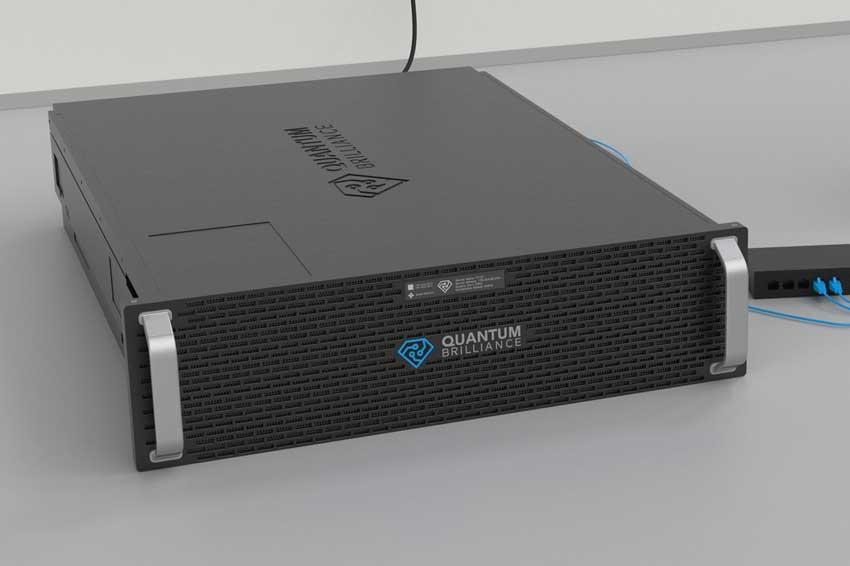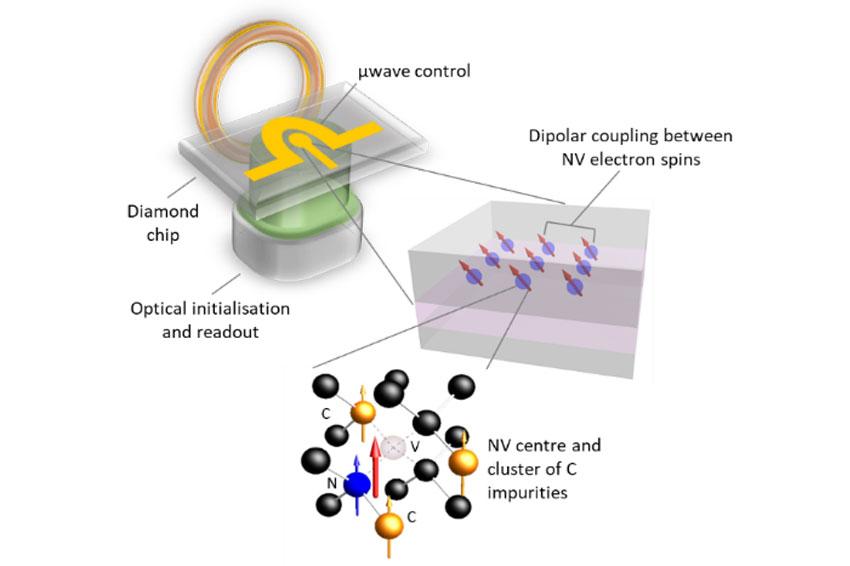Quantum Brilliance to lead $22.5M project
‘Deutsche Brilliance’ to develop new techniques for the fabrication of high-performance quantum microprocessors
Quantum Brilliance, a German-Australian manufacturer of innovative quantum computing hardware, has launched a joint research project with the Fraunhofer Institute for Applied Solid State Physics IAF and the University of Ulm to develop new techniques for the fabrication and control of diamond-based quantum microprocessors.
The goal of the 19.9 million euro (22.5 million US dollar) ‘Deutsche Brilliance’ (DE-Brill) collaboration is to solve two key challenges surrounding diamond-based quantum computers by 2025: the development of atomically precise techniques for the fabrication of quantum microprocessors and to find new methods for selective initialization, read-out, and manipulation of qubits in quantum computers with multiple processor nodes. The research teams believe solving these challenges will serve as important milestones on the path to the mass commercialization of quantum computing technology. The project is 74.8 percent funded by the German Federal Ministry of Education and Research (BMBF).
As part of the collaboration, Fraunhofer IAF and Quantum Brilliance are jointly developing precision manufacturing techniques for the fabrication of scalable arrays of diamond qubits. In addition, the IAF will work on growth processes for diamond substrates of the highest purity and quality. The Quantum Brilliance team has been provided exclusive use of the IAF facility in Freiburg, Germany, to ensure productive and accelerated research outcomes. In parallel, a team at the Institute of Quantum Optics at the University of Ulm is developing scalable readout and control techniques for diamond-based qubits, allowing them to be precisely controlled.
The research project will play an important role in securing Germany as a key business center for quantum computing as well as give Quantum Brilliance a strong, sustainable position in the industry’s emerging global market, according to Dr Mark Mattingley-Scott, European head of Quantum Brilliance.
“With its research infrastructure and engineering knowledge base, Germany offers a unique framework for developing and producing quantum technology,” said Mattingley-Scott. “In addition, the German government also understands the importance of the field and consistently promotes important basic research. That’s why we recently opened our European headquarters in Stuttgart and are focusing on collaborations with the research institutions here to be at the forefront in commercializing high-performance quantum microprocessors in the future.”
Quantum Brilliance is among the pioneers in using synthetically created diamonds in quantum computing. Targeted ‘impurities’ in diamonds – so-called NV centers in which a nitrogen atom takes the place of a carbon atom in the crystal lattice – are used in this process to generate qubits, the elementary computational units of a quantum computer.
In contrast to large quantum computing mainframes which require energy-intensive cooling, quantum ‘accelerators’ based on synthetic diamonds can be produced in small form factors and operate at room temperature, enabling their use in a variety of real-world environments. A 19-inch server rack module of its diamond-based quantum accelerator is available. Continuing miniaturization with a corresponding increase in the number of qubits is planned over the next several years.
Also of interest: Quantum diamond biomarker detection – targeting simpler, faster and ultrasensitive medical diagnostics; (Element Six, QDTI), PhotonicsViews 19(1), February/March 2022
Contact
Fraunhofer Institute for Applied Solid State Physics IAF
Tullastraße 72
79108 Freiburg
Germany
+49 761 5159-0
+49 761 5159-400








